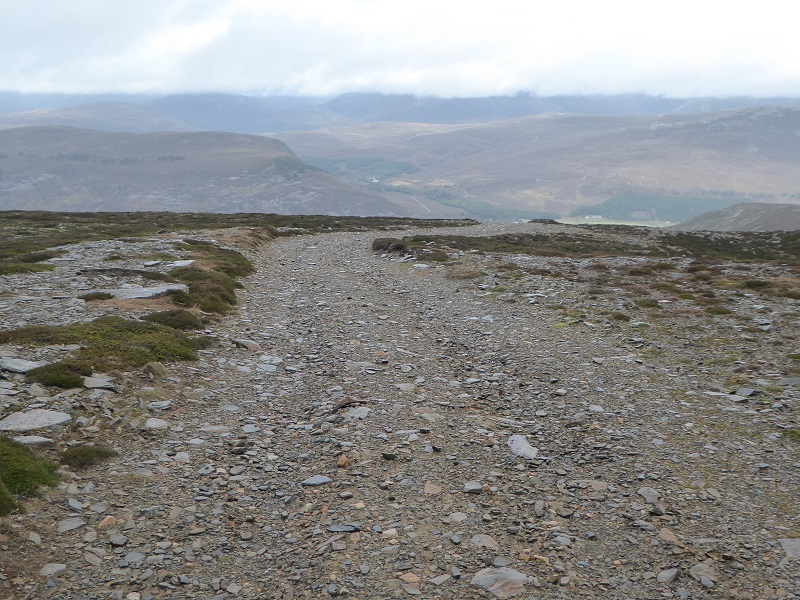
I walked over Morrone from Corriemulizie by Braemar last Monday on a showery day. What I saw got me thinking about what the draft Cairngorms Partnership Plan said about paths and tracks. The public consultation on this ended officially this weekend but people can continue to influence this.
The plan says nothing about the state of hill tracks in the mountains in the National Park, although we know this of concern to the Cairngorms National Park Authority because their planning committee has agreed some (limited) action to ensure new hill tracks meet minimum standards, most recently on the Dinnet Estate. There is nothing however in the Plan about the potential to reduce the visual impact of existing hill tracks. Whereas 20 years ago there was a recognition serious mistakes had been made in constructing tracks into our mountains, which led to the programme of track removal by the National Trust for Scotland on Mar Lodge, the issue now appears to have disappeared from the National Park’s agenda. The arguments for action are I believe as strong now as they were then.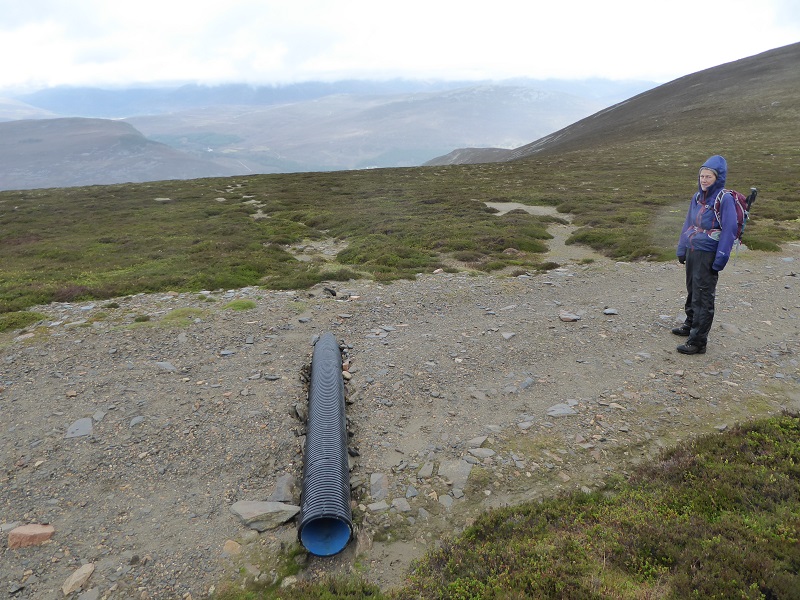
Standards of construction continue to be very poor. Behind the now useless drainage pipe, on the col below Morrone, you can see where material from the tracks has washed out over the moor.
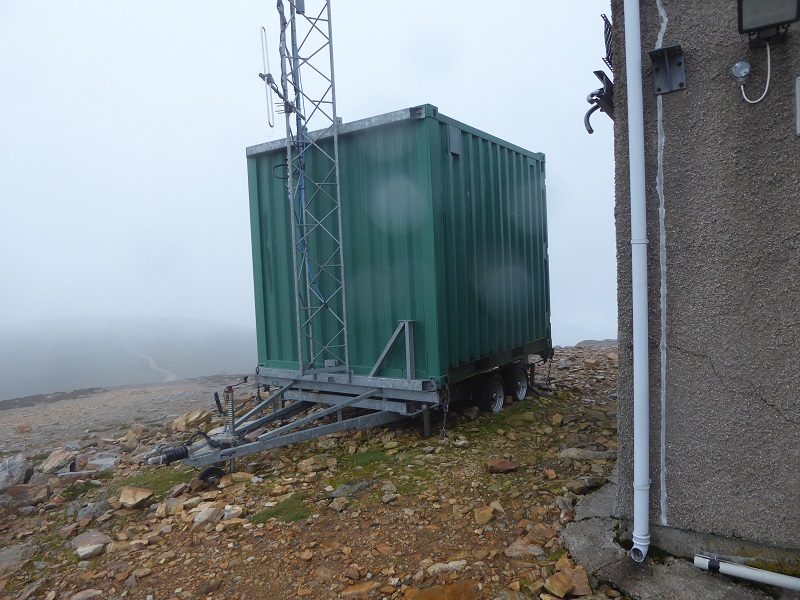
Descending Morrone to Braemar the top section of the hill path has turned into a broad erosion scar whose visual impact is as great as the hill track. Unlike hill tracks though at least there is a programme to improve the condition of hill paths in the National Park through the Mountains and People Project.
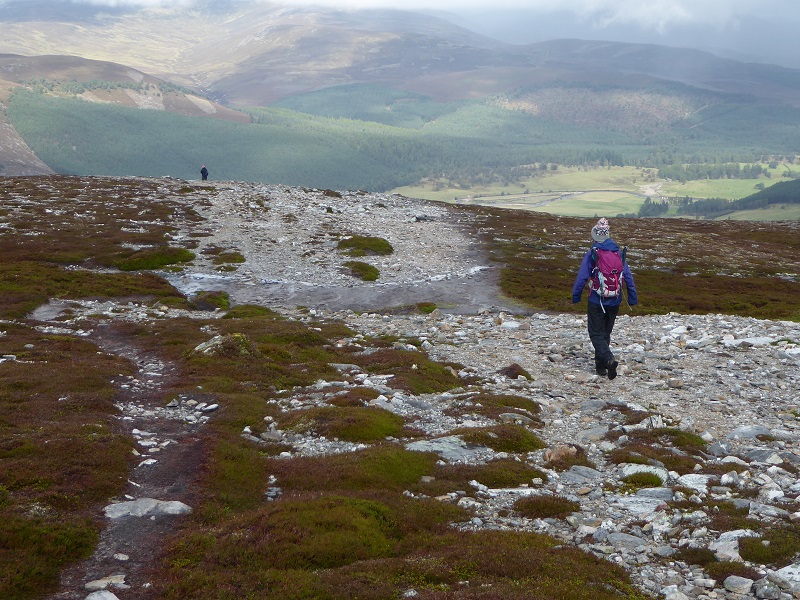
There are well tested techniques that can fix this type of erosion scar, which involve creating a better surface for walking, restoration of vegetation and designing the path so people do not walk across the vegetation in future. You can see the outcome of such techniques lower down the hill where path repair work has been undertaken.
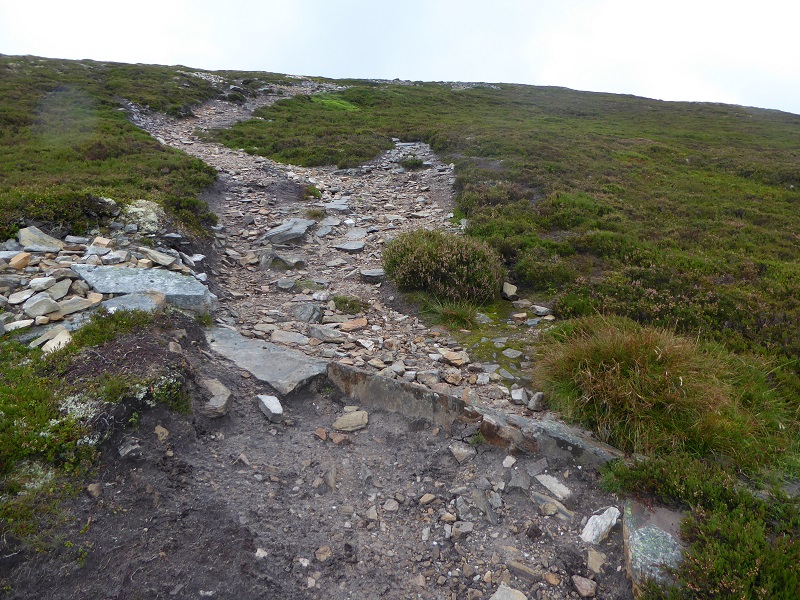
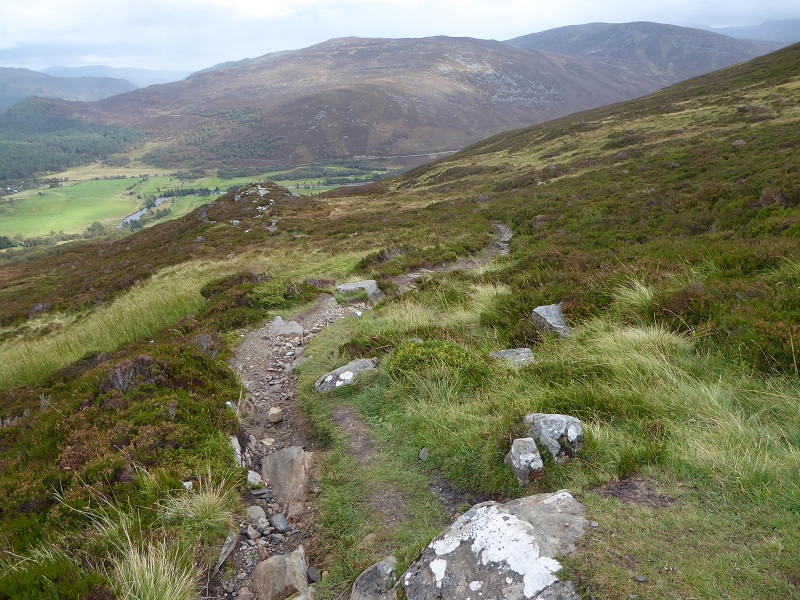
Unfortunately, the CNPA draft Partnership Plan, while supportive the Mountains for People project, does not appear to accept that the state of our hills paths should be a core responsibility of the National Park. There is NO analysis of the state of the path network in the hills or of how much investment is needed to bring them up to and maintain them in an acceptable condition. Now, I am delighted that the Cairngorms Outdoor Access Trust has got funds to repair hill paths through the Mountains and People Project but, to take the Morrone example, its unclear if this is part of the programme (I could not find a list of the hills included on the COAT, Mountains for People or CNPA websites).
And that’s the point, the National Park should have an inventory of all the eroded paths in the National Park and a plan of how it will address these. This, along with its failure to have any plan to reduce the visual impact of hill tracks, is I believe a major omission from the draft Partnership Plan. Without such a plan, there is a real risk is that the people being trained up through the Mountains and People project will have no jobs to go to – there needs to be a long-term vision and programme to sustain jobs. Part of this could include estates being required to use the expertise of the Cairngorms Outdoor Access Trust and its small workforce to repair all the damage that has been caused through the bulldozing of hill tracks. There is a real opportunity here for our National Parks to take a lead and demonstrate best practice and I hope the CNPA take up this challenge in the final version of the Partnership Plan.